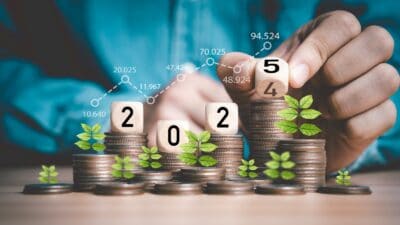When it comes to dividend shares offering high-yield passive income, the UK stock market truly excels. Investors are almost spoilt for choice, with a veritable feast of opportunities to run the rule over.
Here, I’ll show how a simple ISA portfolio of five FTSE 100 stocks could lead to over £12k a year in tax-free dividends.
Please note that tax treatment depends on the individual circumstances of each client and may be subject to change in future. The content in this article is provided for information purposes only. It is not intended to be, neither does it constitute, any form of tax advice. Readers are responsible for carrying out their own due diligence and for obtaining professional advice before making any investment decisions.
Should you invest £1,000 in HSBC right now?
When investing expert Mark Rogers has a stock tip, it can pay to listen. After all, the flagship Motley Fool Share Advisor newsletter he has run for nearly a decade has provided thousands of paying members with top stock recommendations from the UK and US markets. And right now, Mark thinks there are 6 standout stocks that investors should consider buying. Want to see if HSBC made the list?
What is high-yield anyway?
Earlier in April, the annual ISA allowance kicked in, enabling people to invest up to £20k without worrying about tax liabilities. This means that someone could invest £4,000 equally into five shares.
There’s no universally agreed-upon definition of what ‘high-yield’ means. But the average dividend yield of the FTSE 100 index is around 3.6% today. Therefore, a share sporting a 6% yield or more would definitely count as high-yield, in my eyes.
Also, government bond yields and savings rates are currently below 5%. So a dividend portfolio yielding above 6% would be a good target.
Mini portfolio
According to my data provider, 15 Footsie stocks offer 6%+ yields right now. Here are five of them that could be considered for a mini portfolio.
| Sector | Dividend yield | |
| M&G | Investment manager | 11.1% |
| Legal & General | Life insurance | 9.3% |
| British American Tobacco | Tobacco | 7.6% |
| BP | Oil | 7.3% |
| HSBC (LSE: HSBA) | Banking | 6.9% |
The average from this portfolio would be a very juicy 8.4%. I should note that this is based on the trailing — or backwards-looking — dividend yields. Moving forward, they could be higher or lower than this, depending on whether the firms raise or cut their payouts.
Asia-focused banking goliath
Ideally of course, investors want profits and dividends to head higher. But this isn’t guaranteed, as each company has its own risks and challenges.
For example, three of those companies (M&G, Legal & General and HSBC) are from the financial sector. Right now, the global financial system’s facing a lot of uncertainty due to President Trump’s tariffs and the potential for an economic slowdown (or worse).
That could put pressure on earnings, especially for Asia-focused HSBC. It has major operations in and around China, which is facing significant trade pressures from the eye-watering US tariffs. Reduced trade activity and an economic downturn across Asia are clear risks to HSBC’s growth.
This is reflected in the share price, which has dipped 15% since the start of April.
Despite these concerns, I still rate the bank’s dividend prospects. The forecast payout is covered twice over by expected earnings, which should provide a decent buffer if profits come in light. Meanwhile, the balance sheet remains in tip-top shape.
Longer term, I expect HSBC’s pivot to Asia to pay off. According to McKinsey, it will be home to two-thirds of the global middle class by 2030, with 700m new members added between now and then.
Therefore, the region should provide ample opportunities for the firm to increase its earnings and dividends over the coming years.
Compounding returns
A £20,000 ISA yielding 8.4% would throw off £1,680 in passive income each year. But if an investor let that build, the total amount would be around £150,232 after 25 years. The tax-free annual income would then be £12,620, or the equivalent of just over a grand a month.
These calculations assume stable share prices and yields. In reality though, an investor would hope for appreciation in both, as well as a significantly higher final amount by investing more cash regularly along the way.








